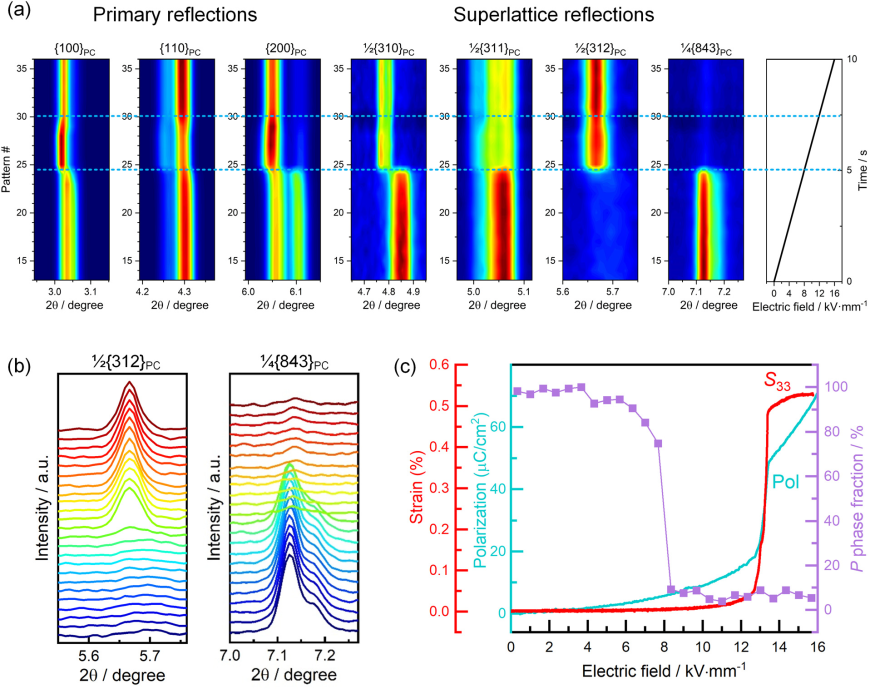Revealing the mechanism of electric-field-induced phase transition in antiferroelectric NaNbO3
01.04.2021 von M. Zhang

In our recent publication entitled “Revealing the mechanism of electric-field-induced phase transition in antiferroelectric NaNbO3 by in situ high-energy x-ray diffraction” (Appl. Phys. Lett. 2021, 118, 132903), Zhang et al. utilized in situ high-energy X-ray diffraction and a fast area detector to investigate the structural/microstructural changes and macroscopic electrical/mechanical responses of the antiferroelectric-ferroelectric phase transition in NaNbO3.
This work revealed that the field-induced behavior is divided into three stages, whereby the phase transition is clearly decoupled from the polarization switching process. The evolution of the antiferroelectric/ferroelectric phase fraction as a function of applied field was determined and the first-order nature of the transition was confirmed. The observed decoupling is related to the mechanical stress present at the phase boundary and a detailed three-step mechanism is proposed. This mechanism is significantly different from what is currently known from lead-based systems and can explain multiple previous experimental observations. The current study provides insight into the irreversibility of the antiferroelectric-ferroelectric phase transition in NaNbO3.




